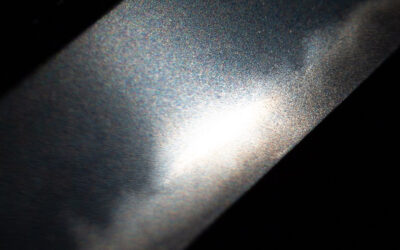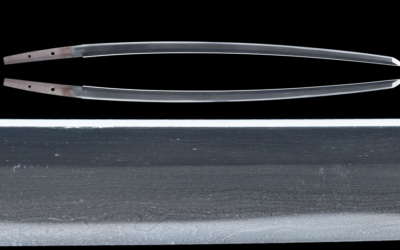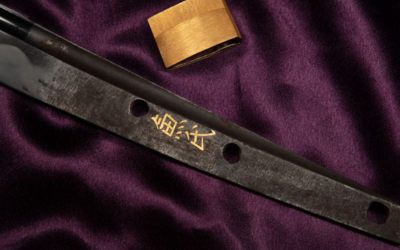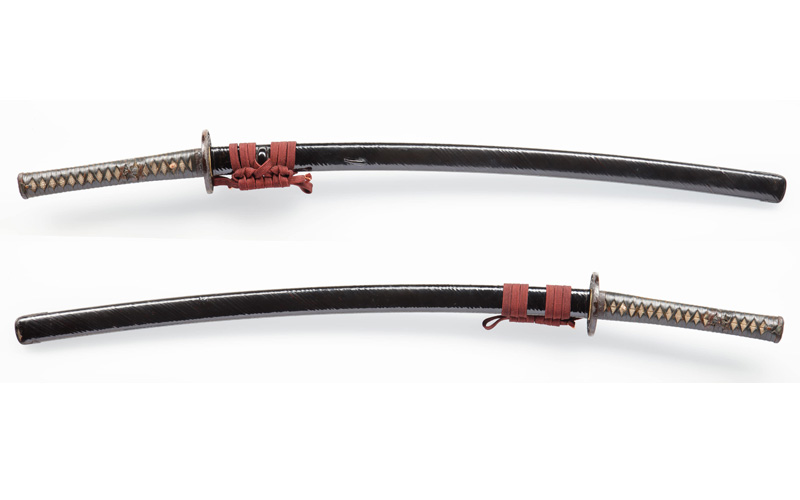

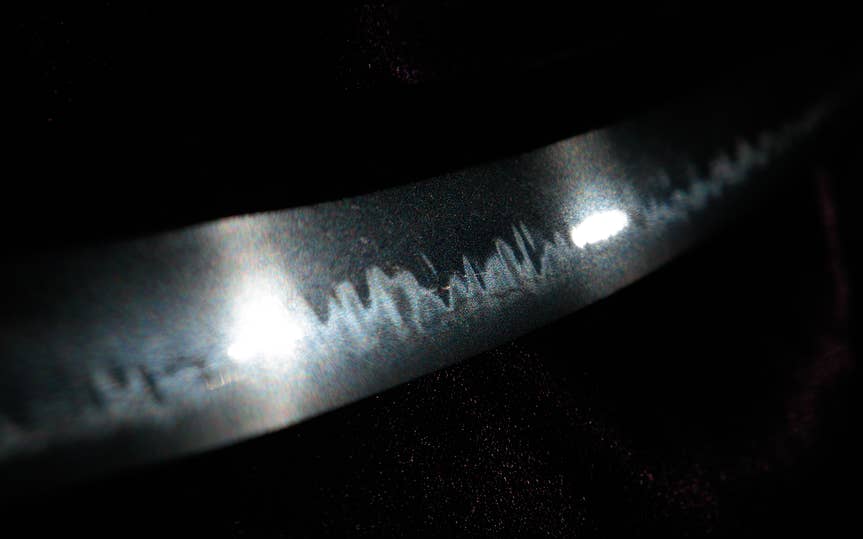
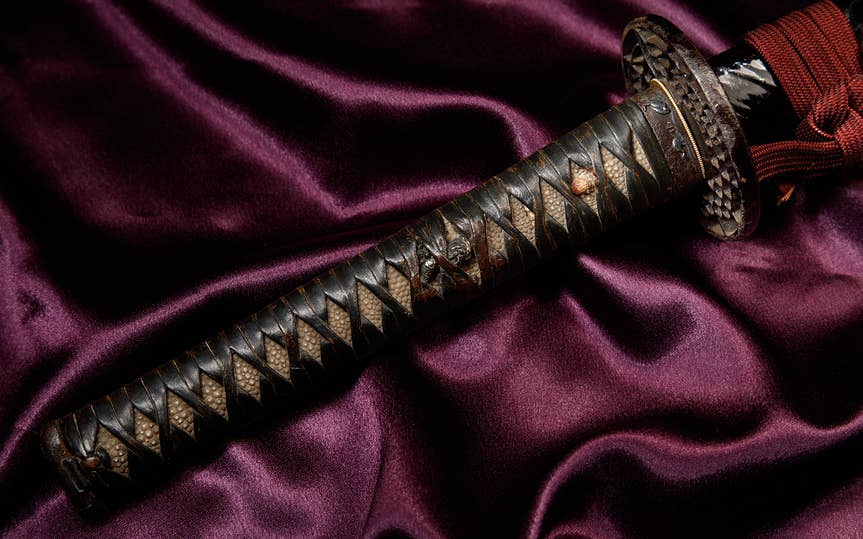
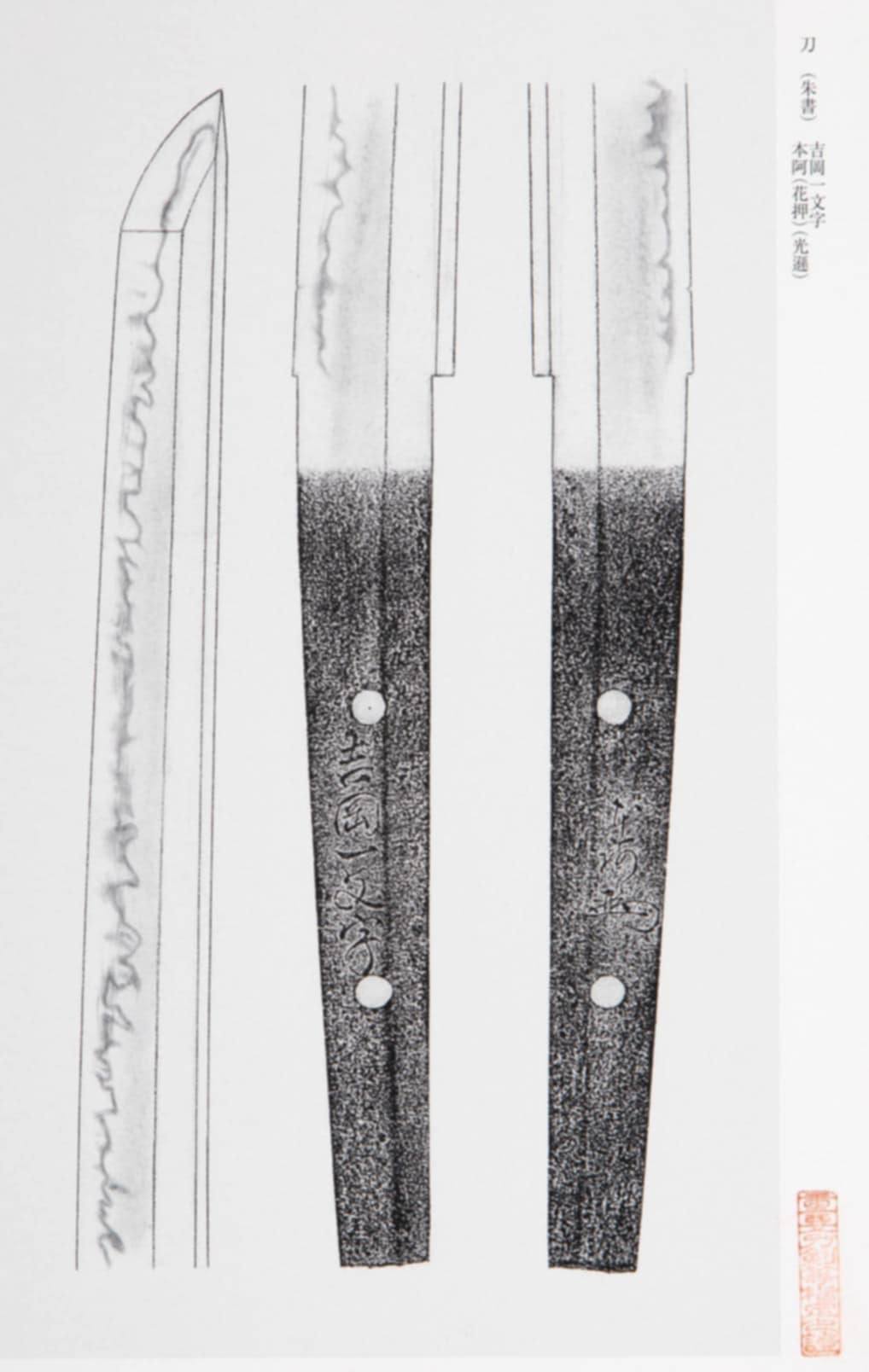

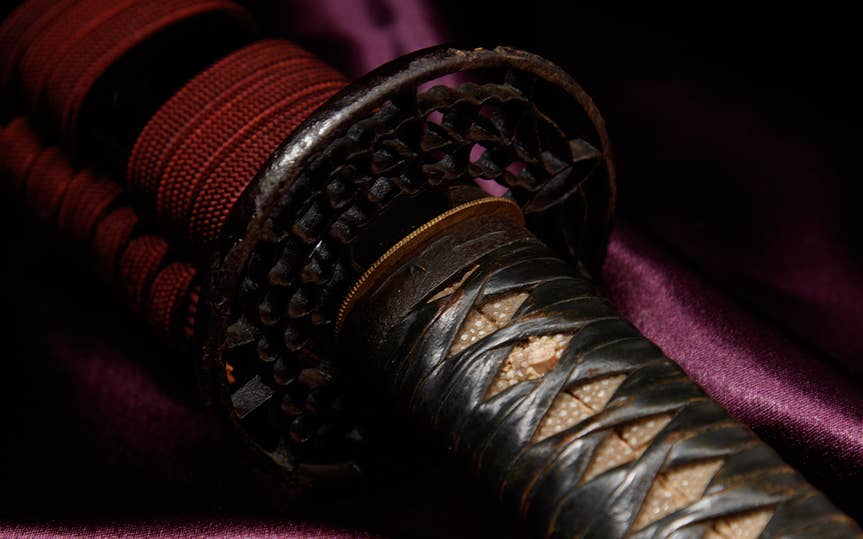
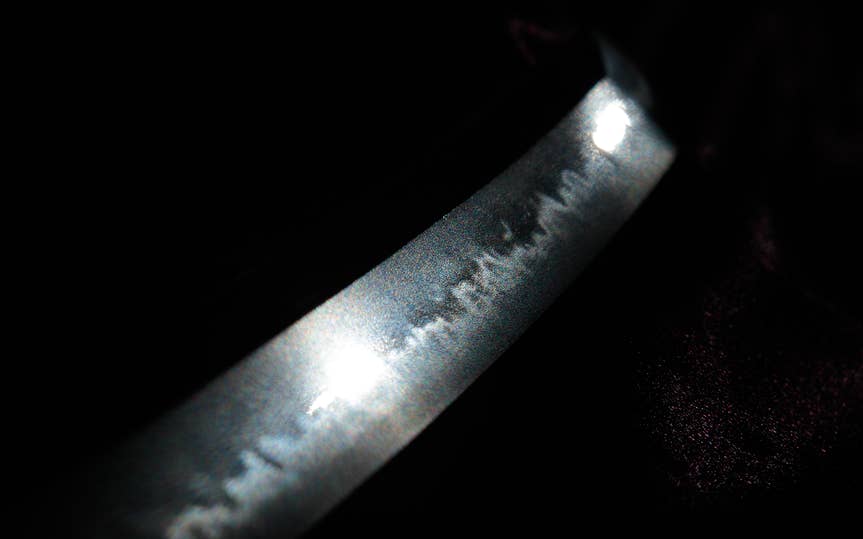
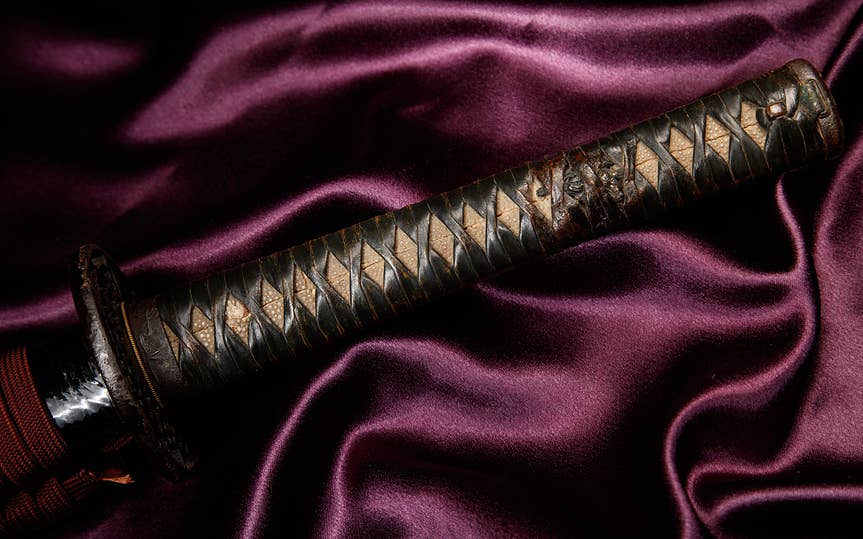
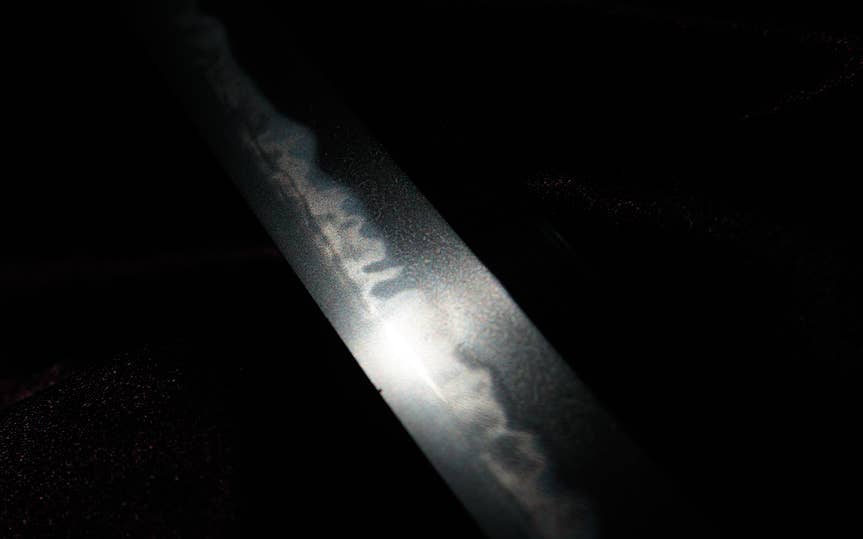
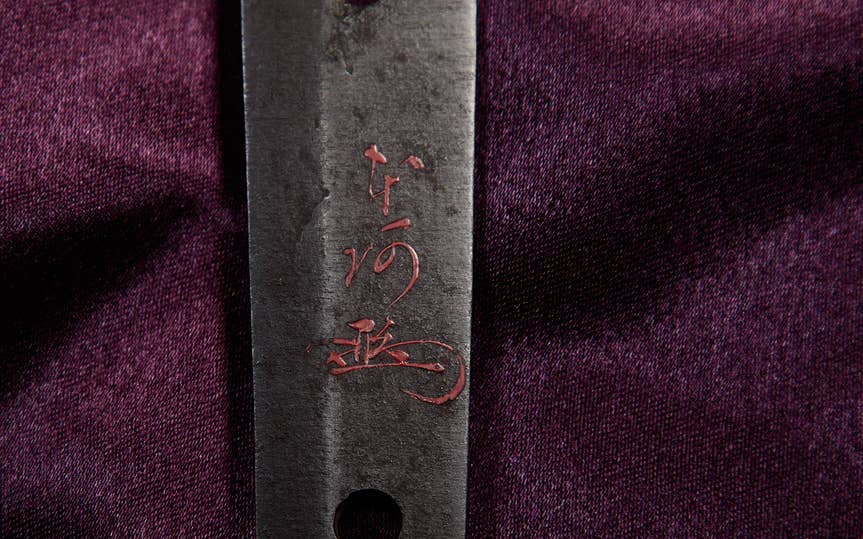
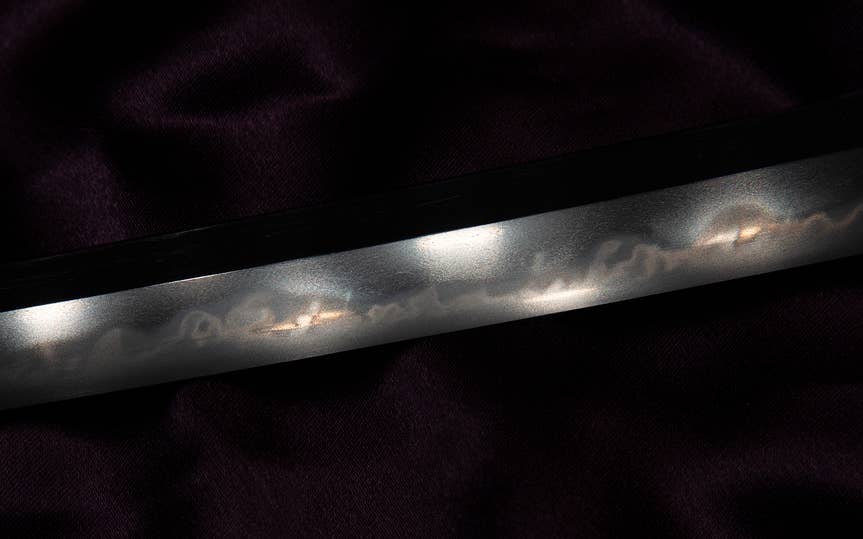
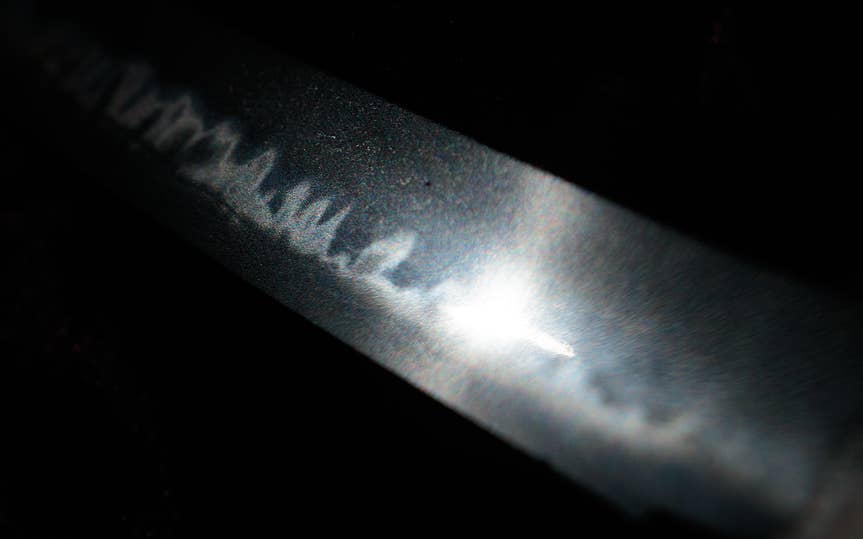
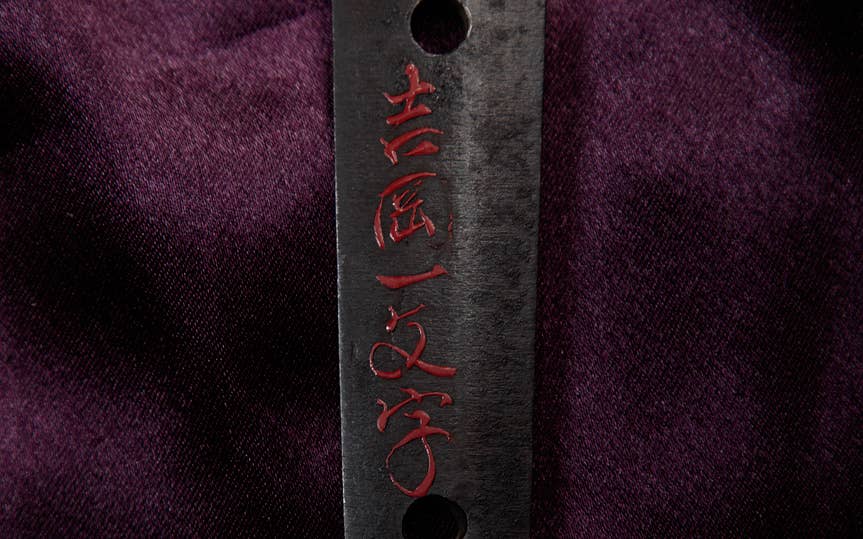
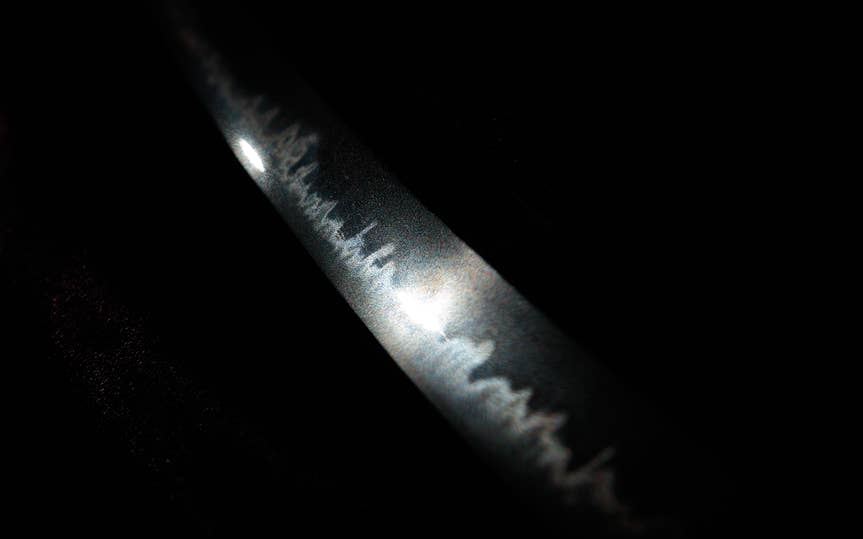
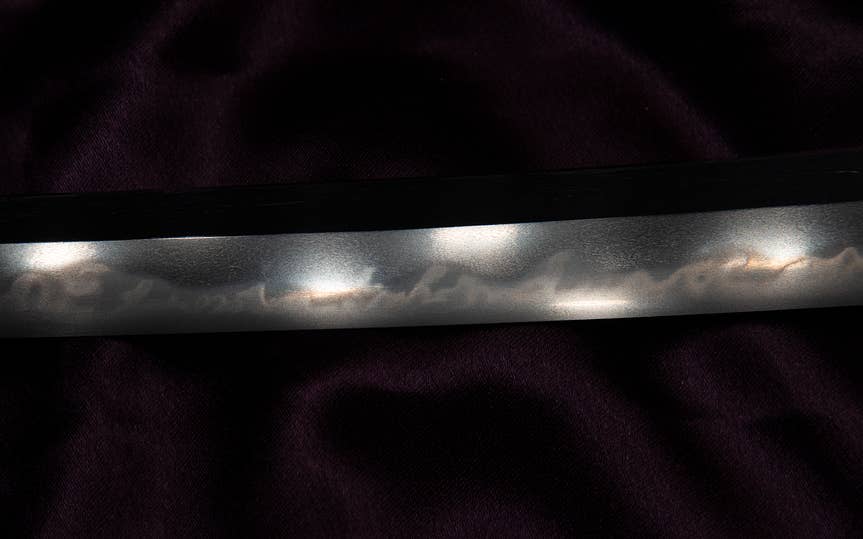
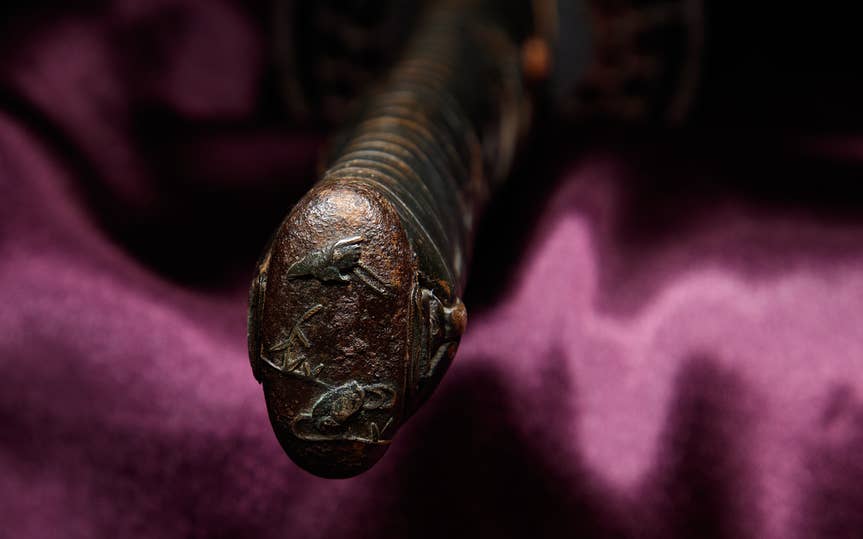
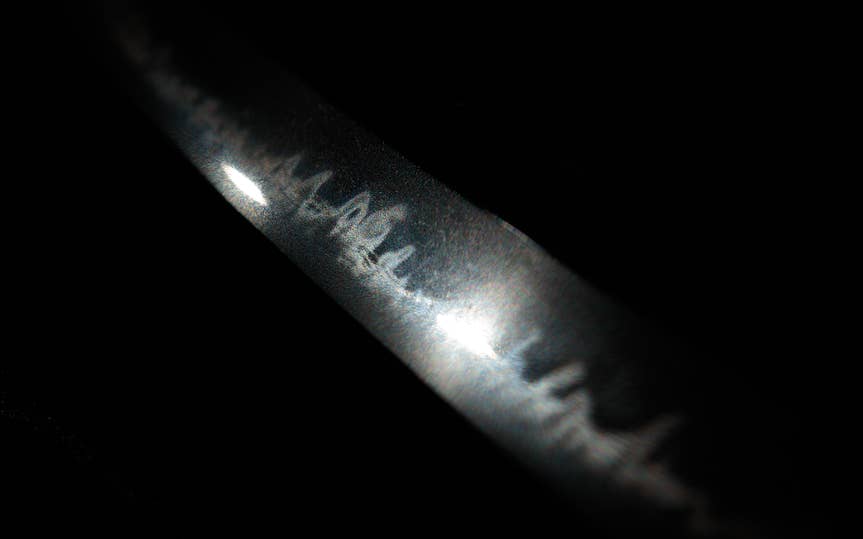
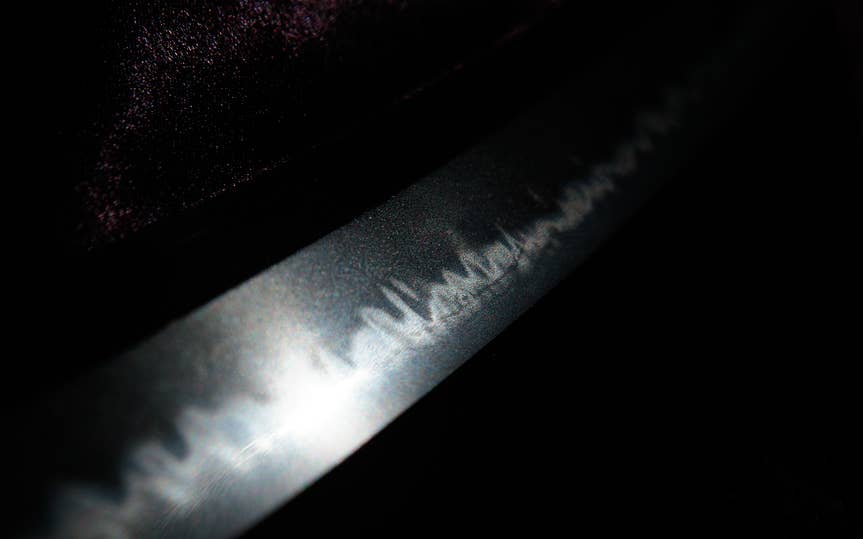
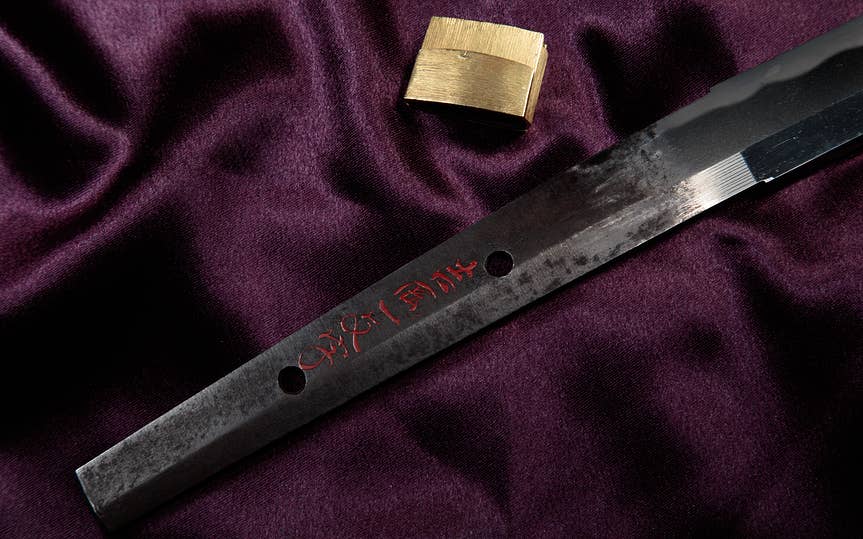
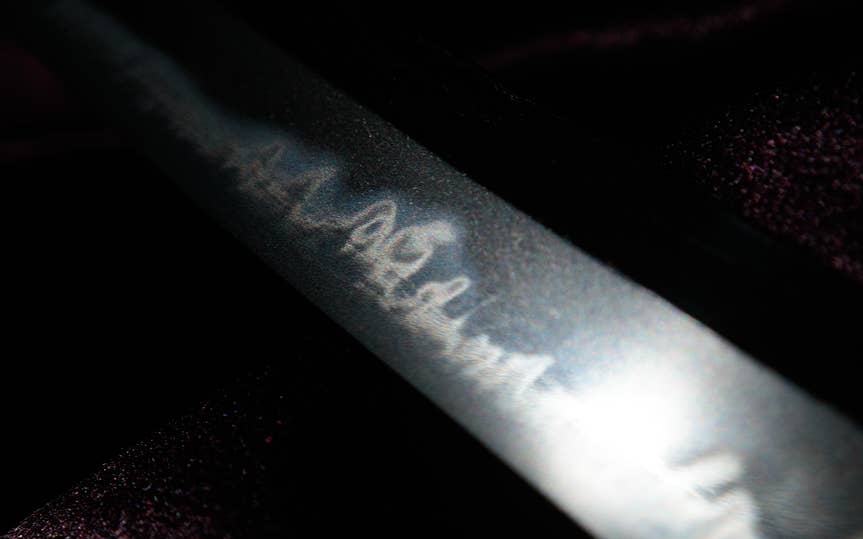
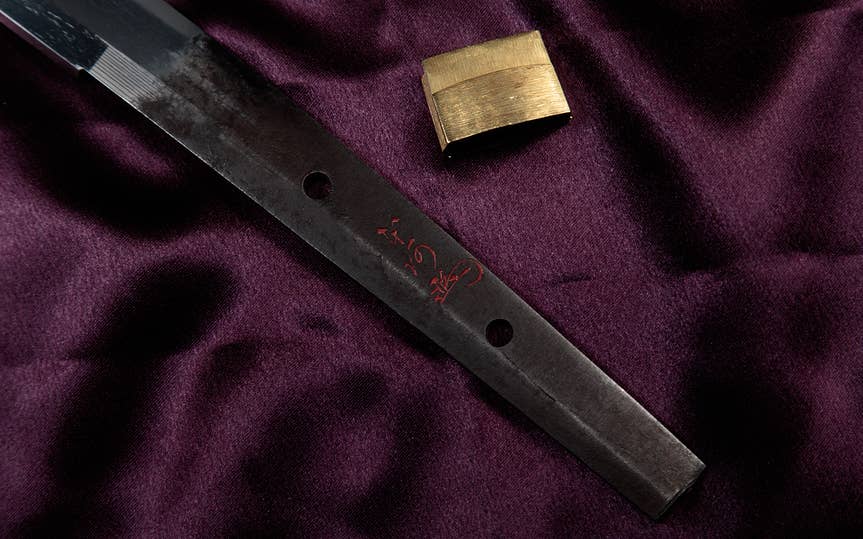
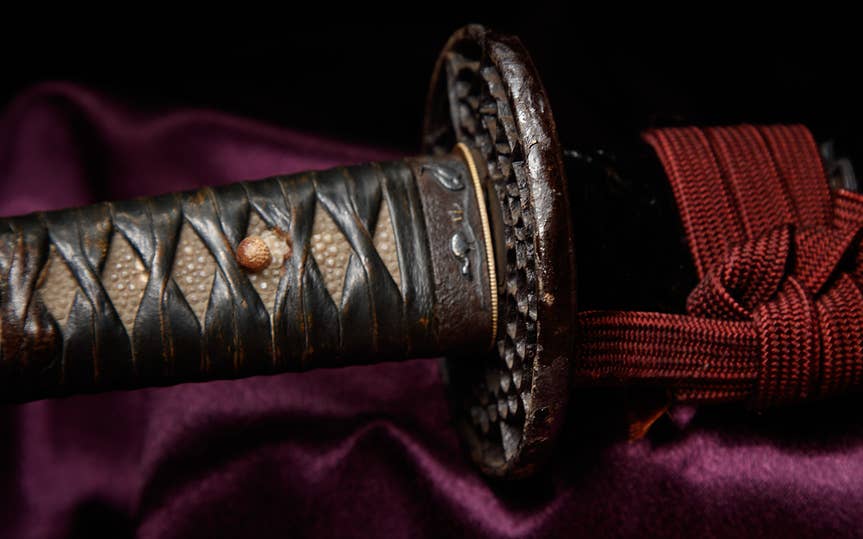
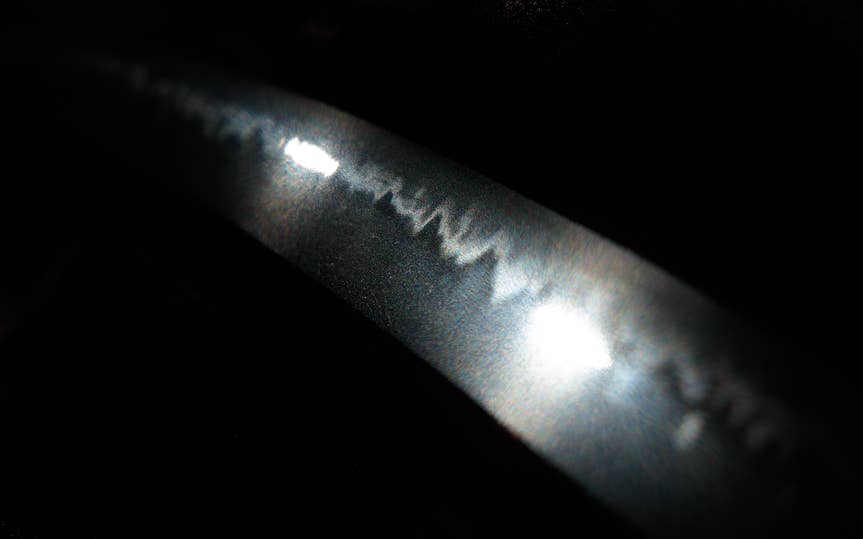
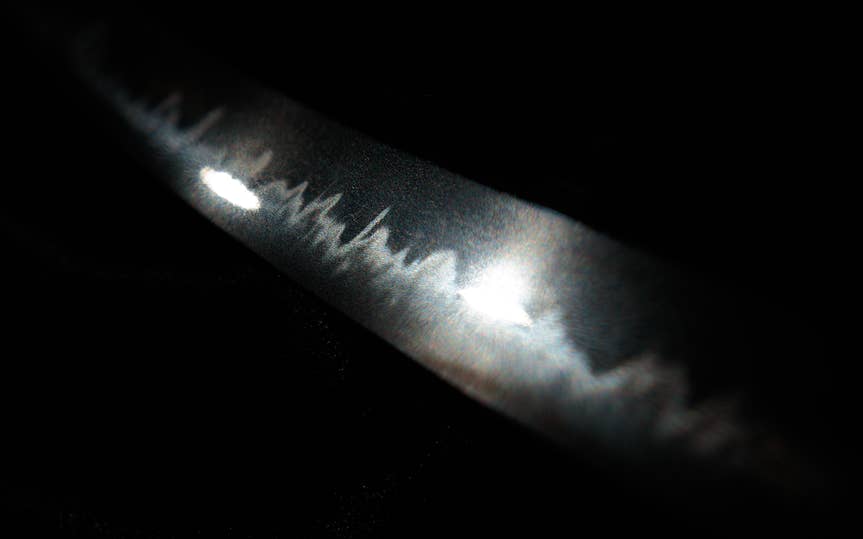

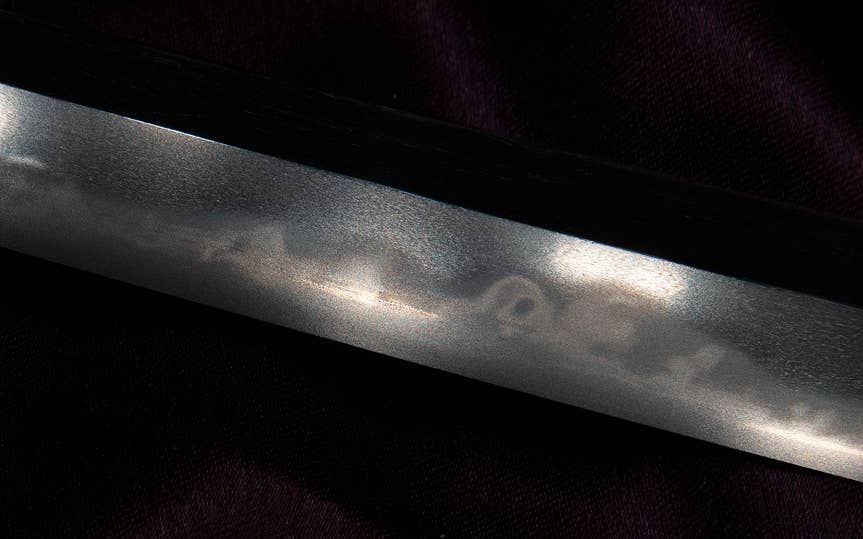
Project Info
Project Description
Offered here is a Juyō Tōken katana attributed to the Yoshioka-Ichimonji school, with a red lacquer attribution (shusho) inscribed by Hon’ami Kōson and a sayagaki by Tanobe Michihiro (Tanzan Hendō), dated to 2012. The blade was designated Juyō Tōken during the 61st session on the 20th of July, 2015.
This katana is ō-suriage mumei and shows a keijō of shinogi-zukuri with an iori-mune, normal mihaba, shallow sori, and a chū-kissaki. The kitae is a dense itame mixed with mokume, featuring ji-nie, fine chikei, and a well-defined midare-utsuri. The hamon is a chōji-midare blended with gunome and togariba, interwoven with abundant ashi and yō, small tobiyaki, kinsuji, and sunagashi. The hamon is nioi-deki with ko-nie, and the nioiguchi is bright and clear. The boshi shows yakikomi over the yokote, followed by a gentle notare-komi and a ko-maru-kaeri.
The nakago is ō-suriage with kirijiri and a very shallow katte-sagari yasurime. There are two mekugi-ana. The sashi-omote bears the red lacquer inscription “Yoshioka-Ichimonji” beneath the first mekugi-ana, close to the ha. The ura is signed “Hon’a + kaō,” confirming the attribution to the Yoshioka-Ichimonji lineage.
The Yoshioka-Ichimonji school rose to prominence following the decline of the Fukuoka-Ichimonji line, continuing from the final years of the Kamakura into the Nanbokuchō period. While the early Fukuoka works are known for their large and flamboyant midare, the Yoshioka school favored a smaller, more controlled midare incorporating a pronounced gunome element. The smiths of this school, including Sukemitsu, Sukeyoshi, and Sukeshige, are recognized for their refined execution and the consistent use of the character “Suke” (助) in their mei.
This blade exemplifies the hallmarks of the Yoshioka-Ichimonji style: a superbly forged jigane with vibrant midare-utsuri, a controlled and elegant midare in the yakiba, and a vigorous, healthy jiba. Both Kōson and Tanobe-sensei affirm the attribution not only through formal inscription but by noting the fidelity of the workmanship to the ichimonji tradition. The blade measures ni-shaku sun shichibu (62.7 cm), and its overall condition is excellent, with a bright nioiguchi and a lively, articulate hamon that reflects the dignified restraint of the later Bizen schools.
This is a rare and significant work from one of the most respected Kamakura-period lineages, bearing two authoritative attributions and recognized at the highest level by the NBTHK.
Juyo Token Katana
Appointed on the 20th of July, 2015 (Session 61)
Katana, shusho, Yoshioka-Ichimonji (吉岡一文字). Hon’a + kaō (本阿「花押」) (Kōson, 光遜)
Keijo
shinogi-zukuri, iori-mune, normal mihaba, noticeable taper, shallow sori, chū-kissaki
Kitae
overall dense itame mixed with mokume, in addition ji-nie, fine chikei, and a midare-utsuri
Hamon
chōji mixed with gunome, togariba, plenty of ashi and yō, small tobiyaki, kinsuji, and sunagashi, the elements of the hamon are overall rather small dimensioned, the hardening is in nioi-deki with ko-nie and the nioiguchi is bright and clear
Boshi
yakikomi over the yokote and then some notare-komi with a ko-maru-kaeri
Nakago
ō-suriage, kirijiri, very shallow katte-sagari, two mekugi-ana, the sashi-omote side bears under the first mekugi-ana and towards the ha the red-lacquer attribution “Yoshioka-Ichimonji” and the ura side the inscription “Hon’a + kaō” (by Hon’ami Kōson)
Setsumei
The two major currents of Kamakura era Bizen were the Ichimonji and the Osafune Schools with the former spreading successfully into the Fukuoka, Yoshioka, Iwato and other local branches into the Nanbokuchō era. All of these gave rise to many outstanding smiths. The name of the school goes back to the habit of some of its smiths signing their blades just with the character for “one” (ichi). However, some Ichimonji smiths also signed with a name under the character Ichi, or just their name and without the character Ichi.
The Yoshioka-Ichimonji School took the place of the earlier Fukuoka-Ichimonji School and prospered from the end of the Kamakura until the Nanbokuchō period. Representative Yoshioka-Ichimonji smiths were Sukemitsu (助光), Sukeyoshi (助吉), Sukeshige (助茂), and Sukeyoshi (助義), i.e. the smiths of this school shared the character for Suke (助). As for the workmanship of the school, we hardly find the large dimensioned midare that was applied by the earlier Fukuoka-Ichimonji School but usually a rather small dimensioned midare which shows a noticeable amount of gonome.
This blade shows an overall dense itame that is mixed with mokume and that features ji-nie, fine chikei, and a midare-utsuri. The hamon is a chōji that is mixed with gunome, togariba, plenty of ashi and yō, small tobiyaki, kinsuji, and sunagashi. The hardening is in nioi-deki with ko-nie and the nioiguchi is bright and clear. Thus the jiba shows very well the characteristic features of the Yoshioka-Ichimonji School and we therefore agree with the red-lacquer inscription. The blade is of a superb deki, having an excellently forged kitae and a yakiba with a clear and bright nioiguchi, and additionally in outstanding condition.
Yoshioka Ichimonji Katana Sayagaki
備前国吉岡一文字
Bizen no Kuni Yoshioka Ichimonji
大磨上無銘ナリテ本阿弥光遜先生ノ同派極ノ朱書有之
Ō-suriage mumei narite Hon’ami Kōson sensei no dōha-giwame no shusho kore ari.
It is shortened and unsigned, with a shusho (red lacquer inscription) written by Honami Koson sensei.
地刃ハ一類ノ典型ヲ示ス者而所傳ハ妥當ト云フベシ
Jiba wa ichirui no tenkei o shimesu mono shikashite shoden wa datō to iubeshi.
The jiba does show the typical characteristics for the school and therefore I am in agreement with the attribution.
時代鎌倉末期。出来宜敷ク地刃共健ヤカ也
The era is the end of the Kamakura period. The blade is of an excellent construction and both ji and ha are very healthy.
刃長弐尺七分有之
Hachō ni-shaku sun shichibu kore ari
Blade length 62.7 cm
惟時壬辰葉月探山邉道識「花押」
Koretoki mizunoe-tatsu hazuki Tanzan Hendō shirusu + kaō
Written by Tanzan Hendō (Tanobe Michihiro) in August of the year of the dragon of this era (2012) + monogram

